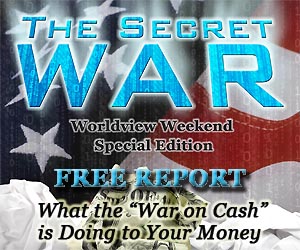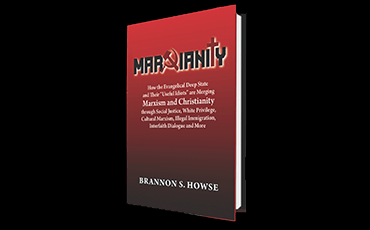Myth of Separation of Church and State
Separation of Church and State
by Kerby <?xml:namespace prefix = st1 ns = "urn:schemas-microsoft-com:office:smarttags" />Anderson
<?xml:namespace prefix = o ns = "urn:schemas-microsoft-com:office:office" />
When Thomas Jefferson first used the phrase "wall of separation," it is certain that he never would have anticipated the controversy that surrounds that term two centuries later. The metaphor has become so powerful that most Americans are more familiar with Jefferson's phrase than the actual language of the Constitution.[1]
In one sense, the idea of separation of church and state is an accurate description of what must take place between the two institutions. History is full of examples (e.g., inquisition) of the dangers that arise when the institutions of church and state become too intertwined.
But the contemporary concept of separation of church and state goes far beyond the recognition that the two institutions must be separate. The current version of this phrase has come to mean that there should be a complete separation between religion and public life.
Origin of the Phrase
At the outset, we should state the obvious: the phrase "separation of church and state" is not in the Constitution. Although that should be an obvious statement, it is amazing how many citizens (including lawyers and politicians) do not know that simple fact. Since the phrase is not in the Constitution and not even significantly discussed by the framers (e.g., The Federalist Papers), it is open to wide interpretation and misinterpretation.
Thomas Jefferson used the phrase "separation of church and state" when he wrote to the Danbury Baptist Association in 1802. In 1947 Justice Hugo Black revived it in the case of Everson v. Board of Education. He wrote that the First Amendment "was intended to erect a wall of separation between church and State."
The wall metaphor revived by Justice Black has been misused ever since. For example, the wall of separation has been used to argue that nearly any religious activity (prayer, Bible reading, moment of silence) and any religious symbol (cross, creche, Ten Commandments, etc) is impermissible. Most of these activities and symbols have been stripped from public arenas.
It's also worth noting that six of the thirteen original states had official, state-sponsored churches. Some states (Connecticut, Georgia, Maryland, Massachusetts, New Hampshire, and South Carolina) even refused to ratify the new Constitution unless it included a prohibition of federal involvement in the state churches.
History of the Phrase
Thomas Jefferson used a metaphor of a "wall of separation between Church and State" in a letter to the Danbury Baptist Association, but it is interesting to note that with all of Jefferson's discourse (speeches, writings) on religion, he only used the phrase once. So what did he mean by the phrase?
Some history is in order. The presidential campaign of 1800 was one of the most bitterly contested presidential elections in American history. Republican Thomas Jefferson defeated Federalist John Adams.
During the campaign, the Federalists attacked Jefferson's religious beliefs arguing that he was an "atheist" and an "infidel." Some were so fearful of a Jefferson presidency, they buried their family Bibles or hid them in wells fearing that President Jefferson would confiscate them.[2] Timothy Dwight (President of Yale College) even warned a few years before that if Jefferson were elected, "we may see the Bible cast into a bonfire."[3] These concerns were unwarranted since Jefferson had written a great deal in the previous two decades about his support of religious liberty.
In the midst of these concerns, the loyal Republicans of the Danbury Baptist Association wrote to the president congratulating him on his election and his dedication to religious liberty. President Jefferson used the letter as an opportunity to explain why he did not declare days of public prayer and thanksgiving as Washington and Adams had done so before him.
In his letter to them on New Year's Day 1802, Jefferson agreed with their desire for religious freedom saying that religious faith was a matter between God and man. Jefferson also affirmed his belief in the First Amendment and went on to say that he believed it denied Congress (or the President) the right to dictate religious beliefs. He argued that the First Amendment denied the Federal government this power, "thus building a wall of separation between Church and State."
It appears that Jefferson's phrase actually came from the 1800 election. Federalist ministers spoke against Jefferson "often from their pulpits, excoriating his infidelity and deism."[4] Republicans therefore argued that clergymen should not preach about politics but maintain a separation between the two.
Jefferson used his letter to the Danbury Baptists to make a key point about his executive power. In the letter, he argued that the president had no authority to proclaim a religious holiday. He believed that governmental authority belonged only to individual states. Essentially, Jefferson's wall of separation applied only to the national government.
Although the Danbury letter was published in newspapers, the "wall of separation" metaphor never gained much attention and essentially slipped into obscurity.
In 1879 the metaphor entered the lexicon of American constitutional law in the case of Reynolds v. United States. The court stated that Jefferson's letter "may be accepted almost as an authoritative declaration of the scope and effects of the [First] Amendment thus secured."[5] Although it was mentioned in this opinion, there is good evidence to believe that Jefferson's metaphor "played no role" in the Supreme Court's decision.[6]
In 1947 Justice Hugo Black revived Jefferson's wall metaphor in the case of Everson v. Board of Education. He applied this phrase in a different way from Thomas Jefferson. Black said that the First Amendment "was intended to erect a wall of separation between church and State." He added that this wall "must be kept high and impregnable."[7]
Daniel Dreisbach, author of Thomas Jefferson and the Wall of Separation Between Church and State, shows that Black's wall differs from Jefferson's wall. "Although Justice Black credited the third president with building the 'wall of separation,' the barrier raised in Everson differs from Jefferson's in function and location."[8]
The wall erected by Justice Black is "high and impregnable." On the other hand, Jefferson "occasionally lowered the 'wall' if there were extenuating circumstances. For example, he approved treaties with Indian tribes which underwrote the 'propagation of the Gospel among the Heathen.'"[9]
There is also a difference in the location of the two walls. Dreisbach says:
Whereas Jefferson's "wall" explicitly separated the institutions of church and state, while Black's wall, more expansively, separates religion and all civil government. Moreover, Jefferson's "wall" separated church and the federal government only. By incorporating the First Amendment nonestablishment provision into the due process clause of the Fourteenth Amendment, Black's wall separates religion and civil government at all levels-federal, state, and local.[10]
Jefferson's metaphor was a statement about federalism (the relationship between the federal government and the states). But Black turned it into a wall between religion and government (which because of the incorporation of the Fourteenth Amendment could also be applied to state and local governments).
The phrase "separation of church and state" is not in the Constitution and its current use is very different from what Thomas Jefferson intended two centuries ago. A careful study of history shows how far we have strayed from its original intent.
[1] Barbara Perry, "Justice Hugo Black and the Wall of Separation between Church and State," Journal of Church and State 31(1989): 55.
[2] Dumas Malone, Jefferson and His Time, vol. 3, Jefferson and the Ordeal of Liberty (Boston: Little, Brown, 1962), 481.
[3] Timothy Dwight, The Duty of Americans, at the Present Crisis, reprinted in Ellis Sandoz, ed., Political Sermons of the American Founding Era, 1730-1805 (Indianapolis, IN: Liberty Press, 1991), 1382.
[4] Philip Hamburger, Separation of Church and State (Cambridge, MA: Harvard University Press, 2002) 111.
[5] Reynolds v. United States, 98 U.S. 145, 164.
[6] Robert M. Hutchins, "The Future of the Wall," in The Wall between Church and State, ed. Dallin H. Oaks (Chicago: University of Chicago Press, 1963), 17.
[7] Everson v. Board of Education, 330 U.S., 16, 18.
[8] Daniel Dreisbach, Thomas Jefferson and the Wall of Separation Between Church and State (New York: New York University Press, 2002), 125.
[9] Derek H. Davis, "Wall of Separation Metaphor," Journal of Church and State, vol. 45(1), Winter 2003.
[10] Dreisbach, Thomas Jefferson, 125.
Support Our Broadcast Network
Trending Stories
Latest
We're a 100% Listener Supported Network
3 Simple Ways to Support WVW Foundation
Make Monthly Donations
-or-
A One-Time Donation
-
Mail In Your Donation
Worldview Weekend Foundation
PO BOX 1690
Collierville, TN, 38027 USA -
Donate by Phone
901-825-0652

















